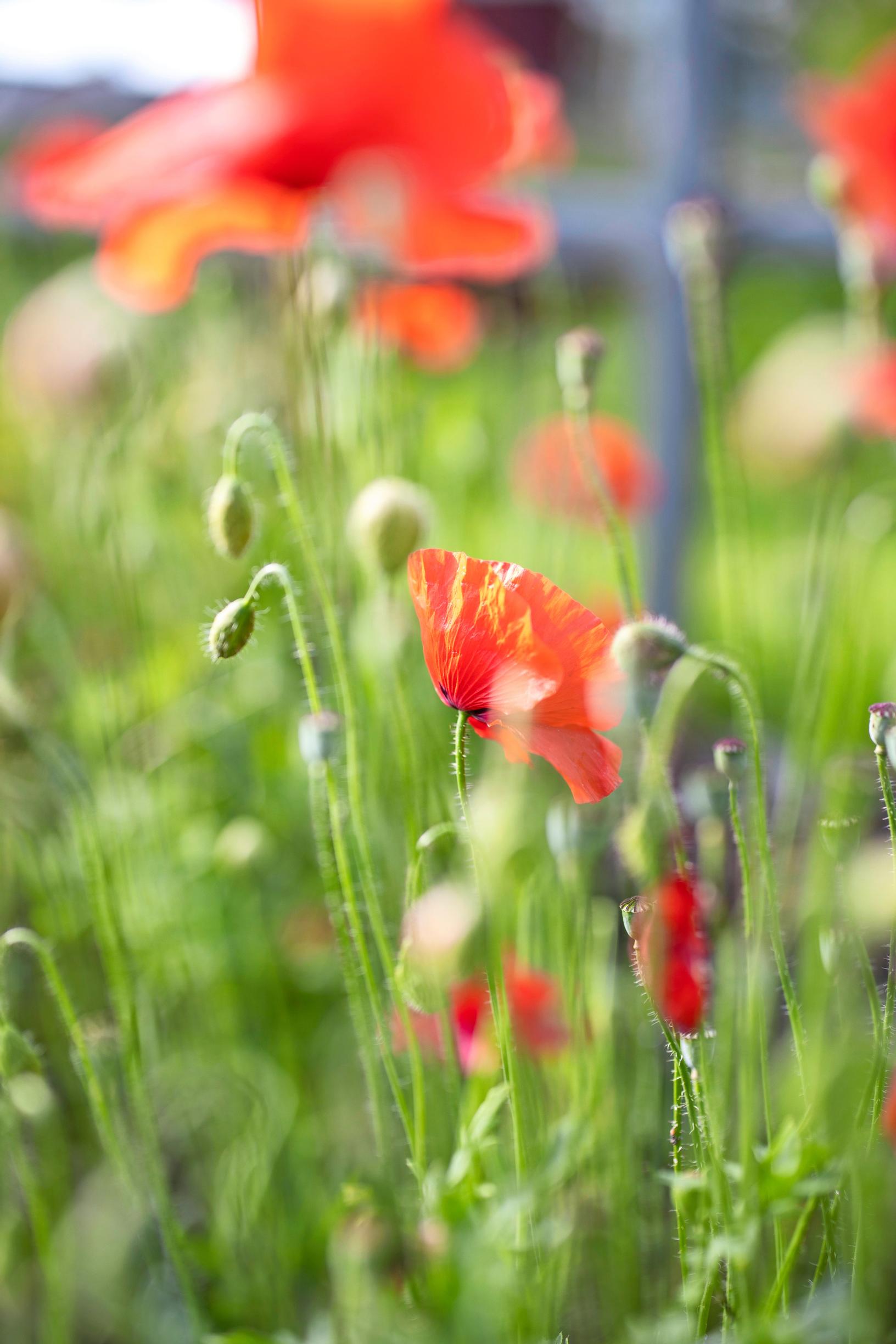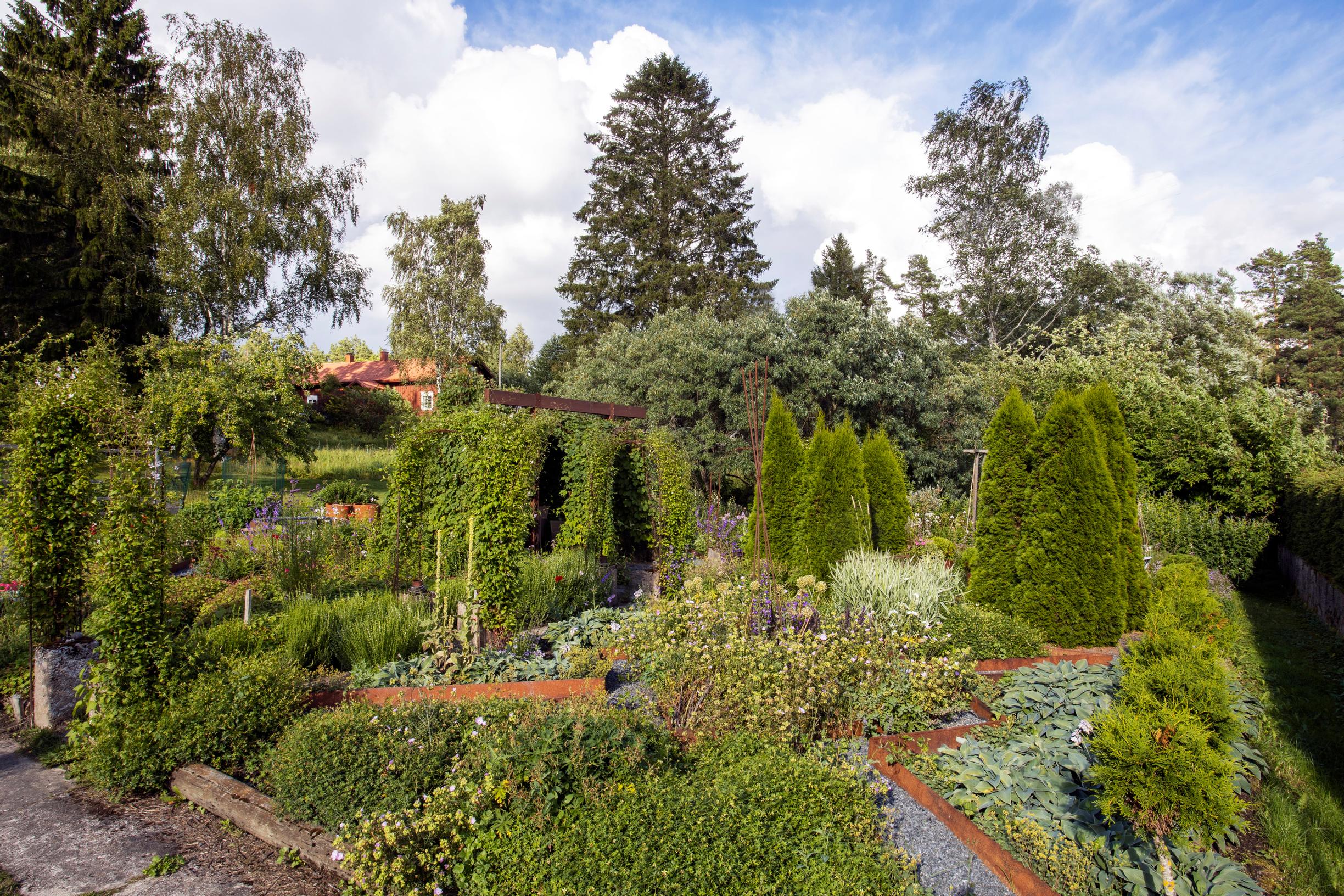
“I promised I would make my mother’s final garden”—in Maje’s backyard, generations of memories meet her playful spirit
Finnish Maje Forstén first started gardening as a way to cope with her grief. In her garden, she wants to hold on to happy memories as well as let her imagination run free.
A deep silence fell on the other end of the phone line when Maje Forstén told her friend that, after waiting ten years, she had finally found a new man—the utterly perfect David—and that he had already moved in with her. Her friend sounded so shocked that Maje finally admitted she was only joking and was actually talking about a new garden statue that had just arrived. She had found a life-sized replica of Michelangelo’s famous David statue after a long search at a statue shop in Muurla. It would become the new centerpiece of Maje’s herb garden.
“I love pranks and jokes, and I bring them into my garden, too. This is where imagination takes flight. I think of my garden as an adult playhouse, and I can do everything exactly how I want. I only grow summer flowers because I feel there should be nothing too practical in a garden—its job is simply to bring joy!”
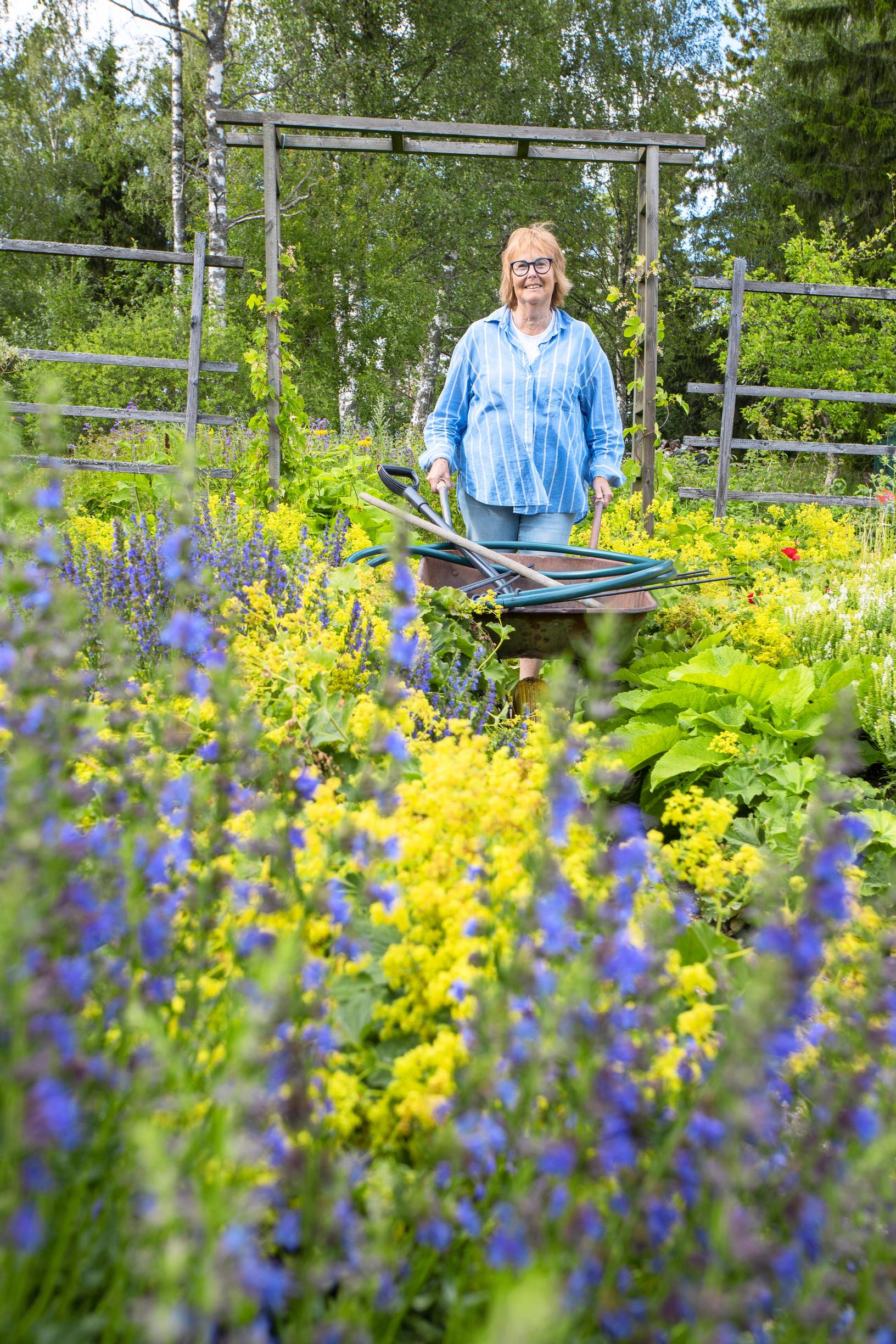
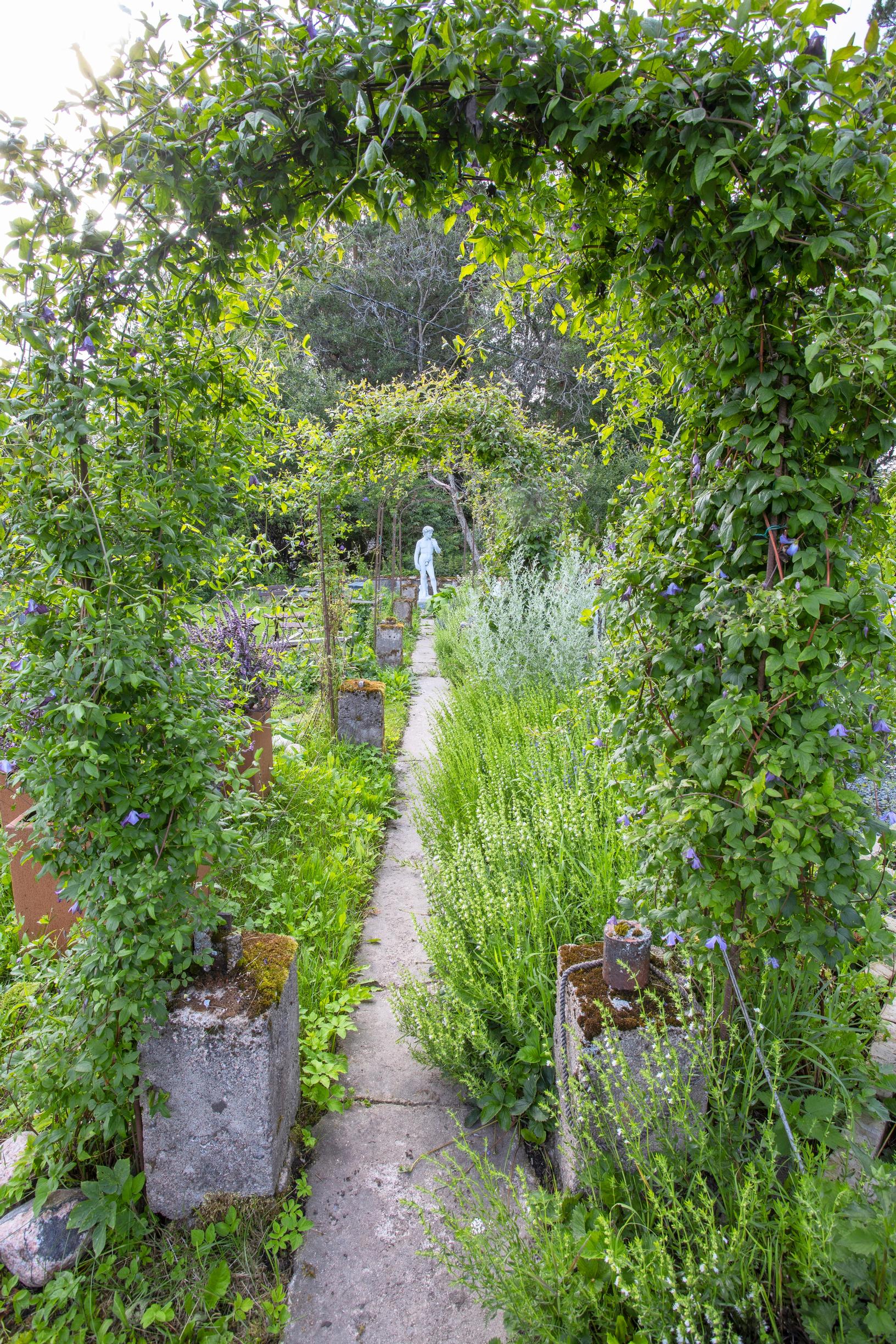
The large countryside garden has been in Maje’s family for ages. She learned gardening here as a child by watching her mother, Magdalena, and her uncles at work. In the 1960s, her uncles grew enormous amounts of big, colorful carnations in the greenhouse on the property, since they were fashionable then. When the greenhouse business closed, the frames for cultivating cut-flower seedlings were left behind. Her mother kept growing vegetables in her kitchen garden—carrots, potatoes, beans, and more—so plentifully that she was nearly self-sufficient all winter. As a young adult, Maje moved to the Helsinki area. She ran her own couture atelier in downtown Helsinki for years and raised her two sons.
“In early 2004, my mother was diagnosed with incurable cancer, and she knew she wouldn’t be able to work in the garden anymore. She thought about letting the whole place go, but I promised I would make her final garden for her. That summer was like my grief work. She passed away at Christmas.”
Maje inherited her mother’s house and garden and began slowly reshaping both in her spare time to fit her own style. Before long, however, the two-hour drive felt too far, so the Forsténs decided to move to the property full-time. Over the years, nearly everything in the house and garden has been reinvented.
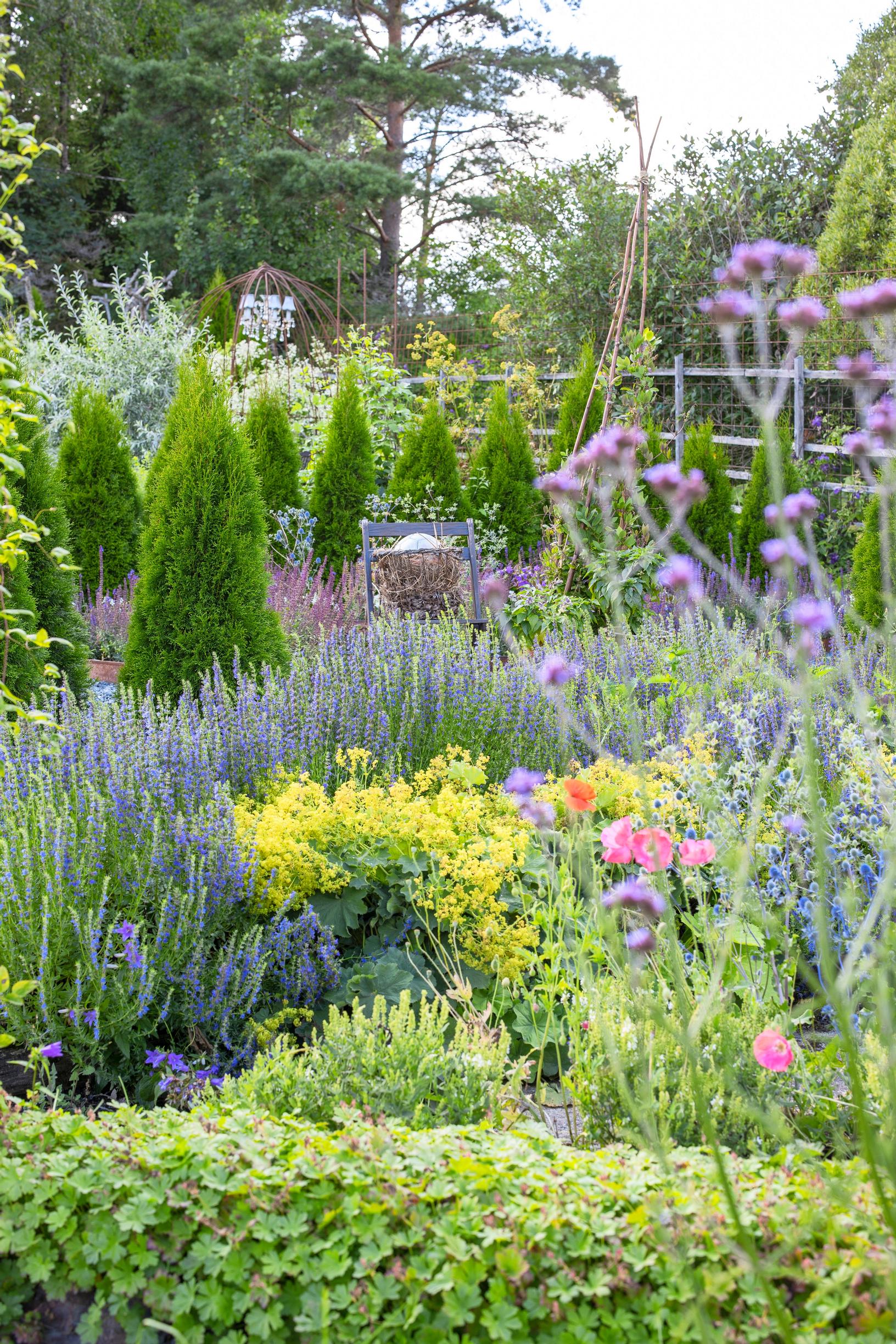
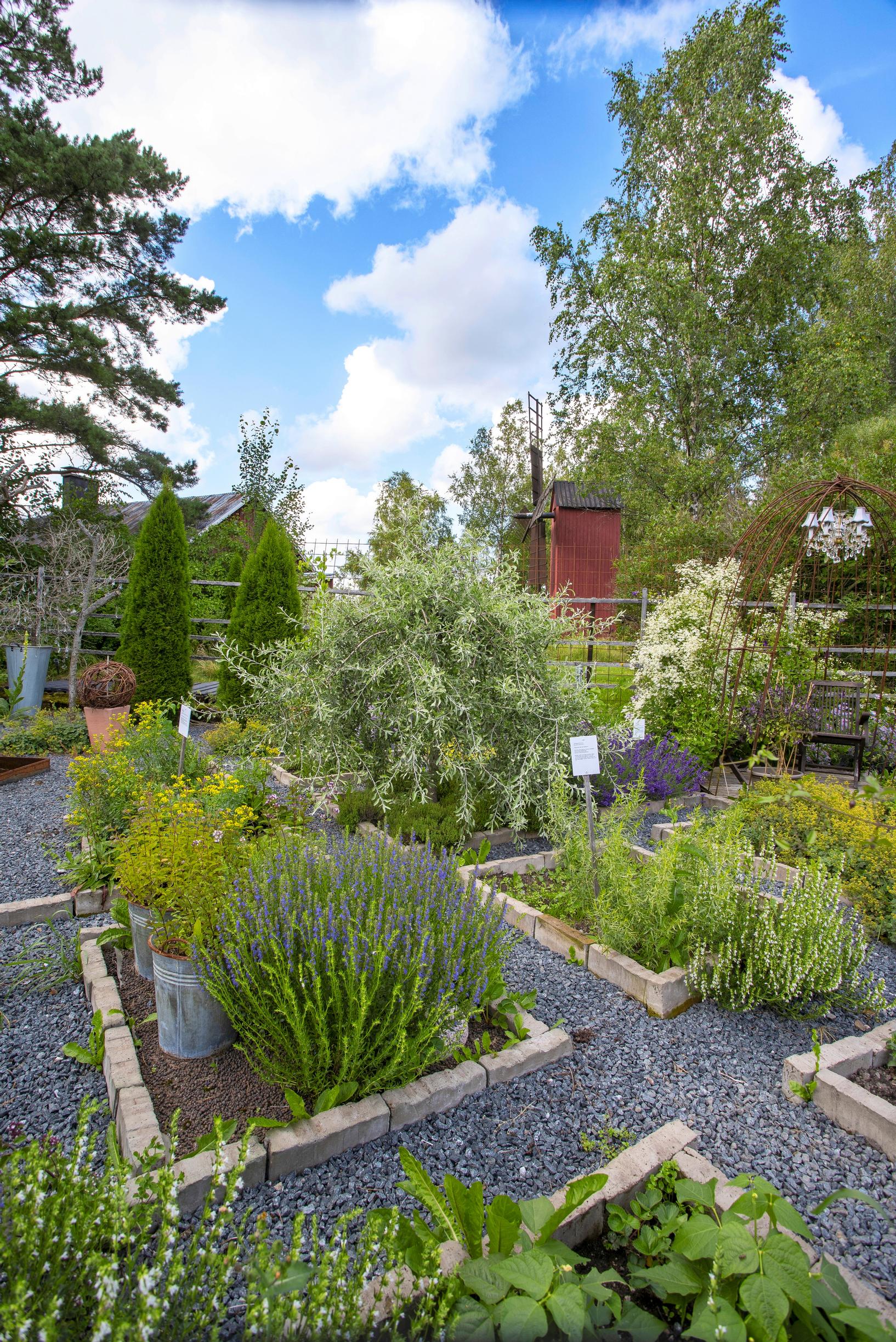
“I promised I would make my mother’s final garden for her.”
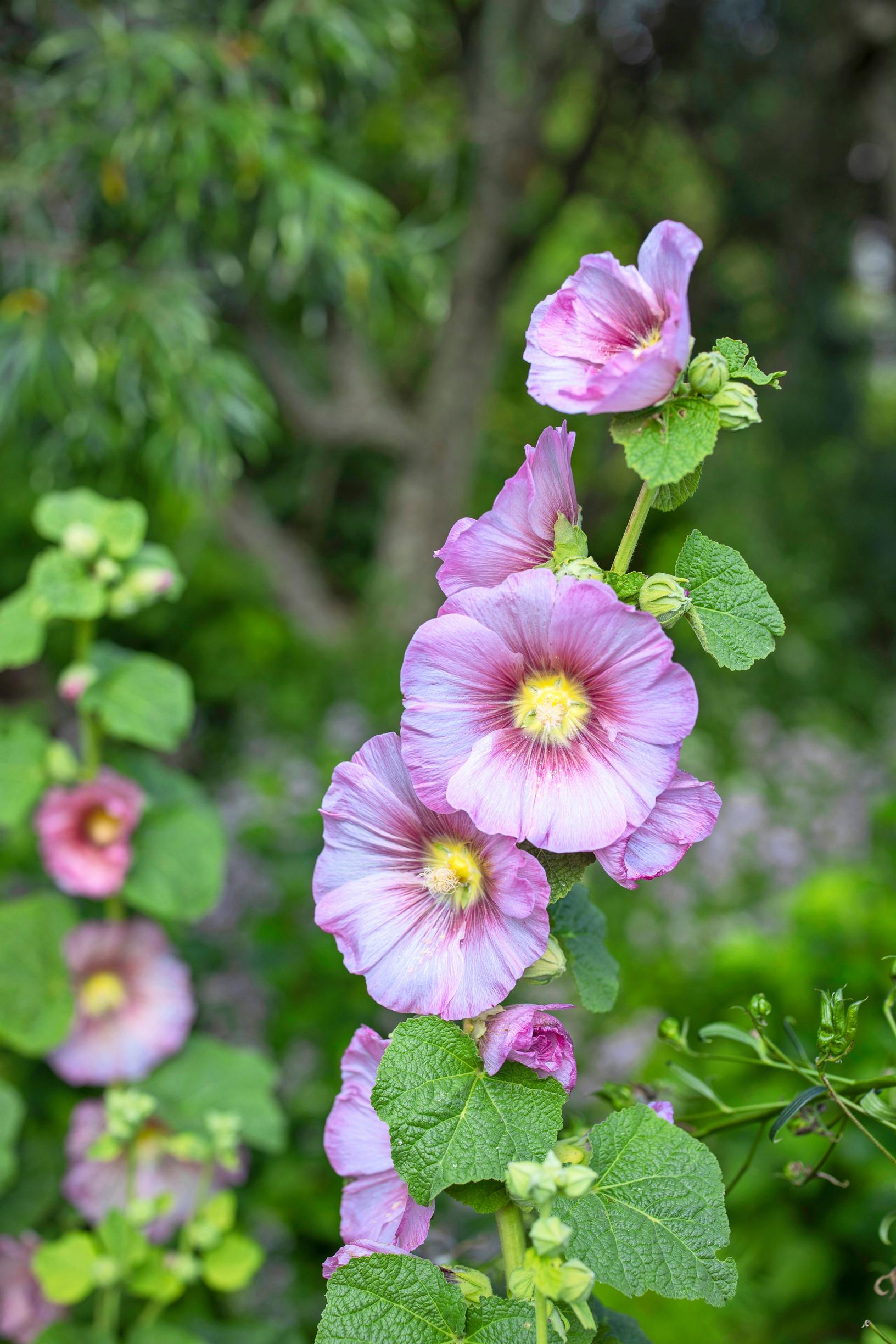
Where once there were practical greenhouse frames, there’s now a bright, maze-like herb garden marked by clematis arches along its main walkway. Bees and bumblebees buzz around the blossoms of herbs, hollyhocks, poppies, and other annuals. At the walkway’s end, among wormwood, hyssop, southernwood, sage, tarragon, and lavender, stands the stately David statue. The setting is reminiscent of the old gardens of southern Europe. Maje says she had medieval monastery gardens in mind when she planned it.
“When I design something new, I see exactly how it will look once finished. Colors matter a lot to me. I love roughness and rust; I’m not into anything dainty. And I can’t imagine a romantic rose garden here. But in my mother’s honor, I do grow red flowers—even though they’re not my favorite.”
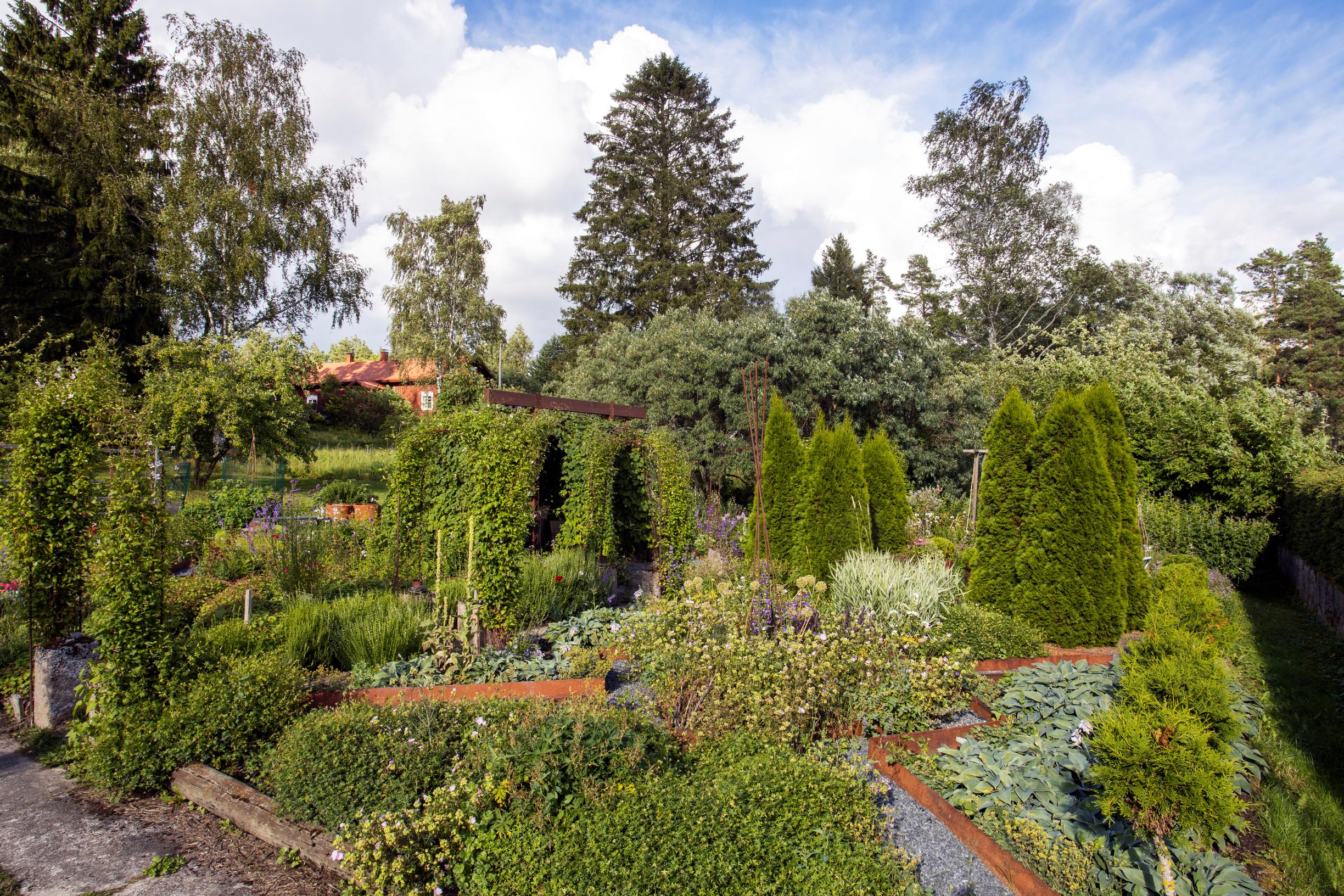
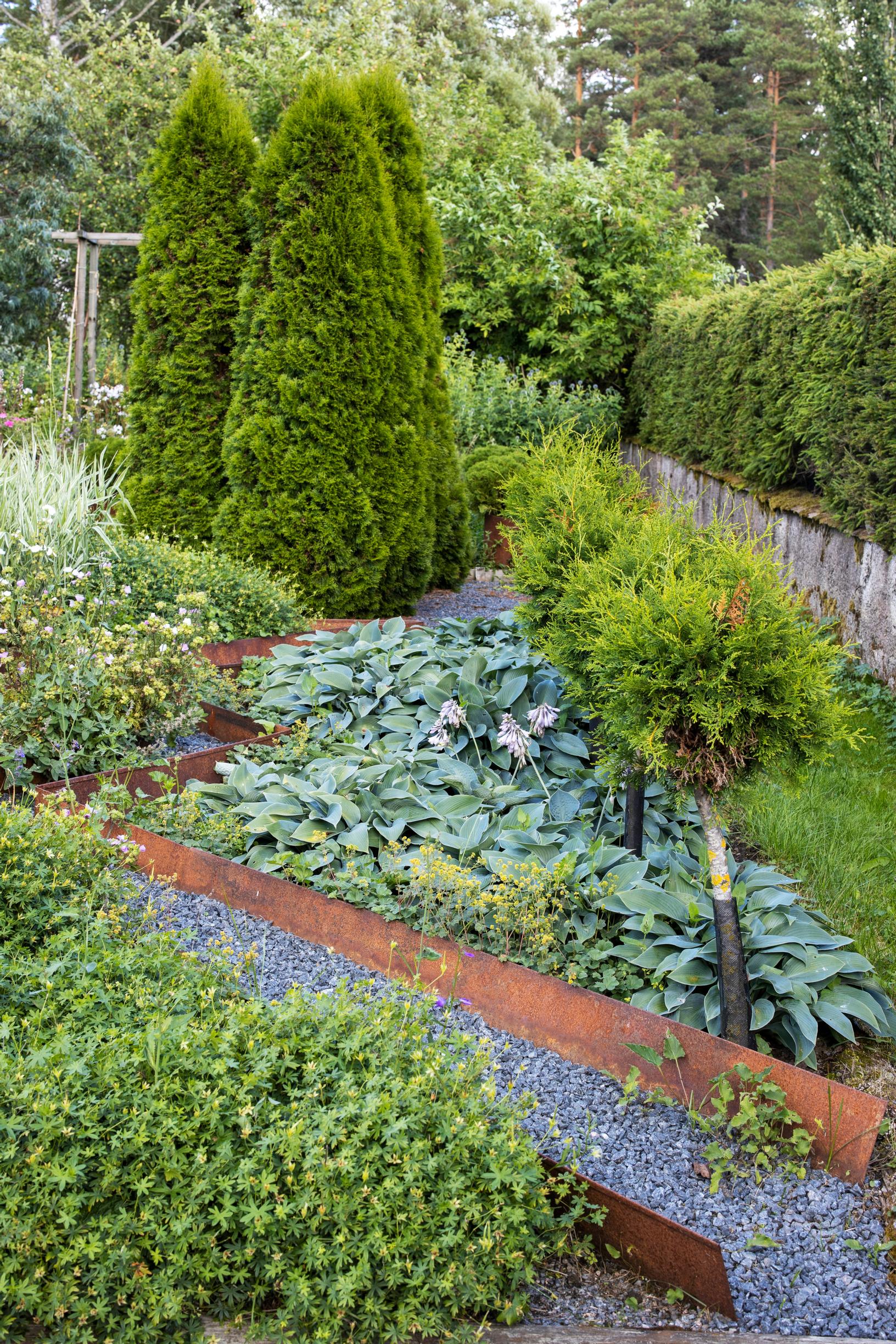
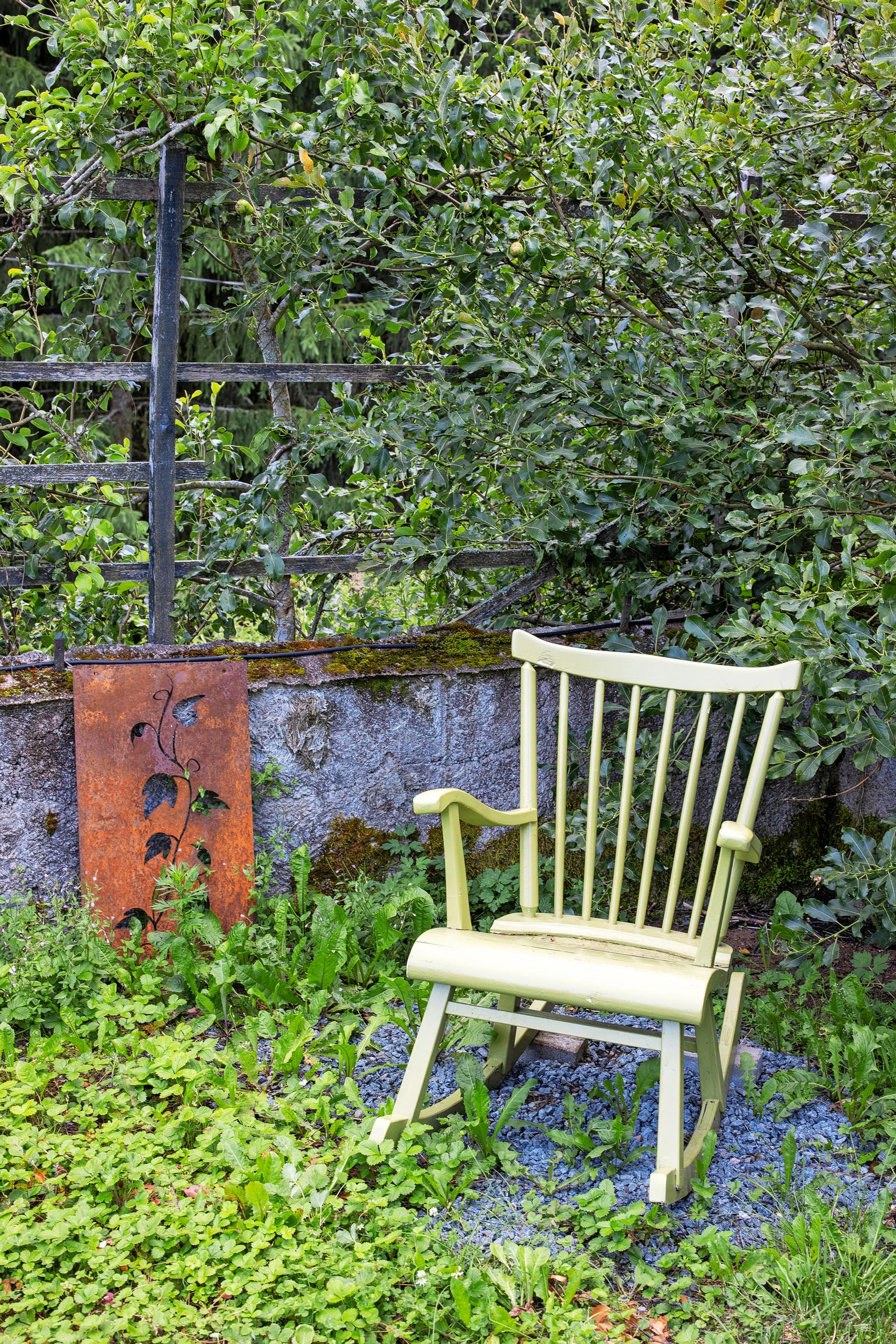
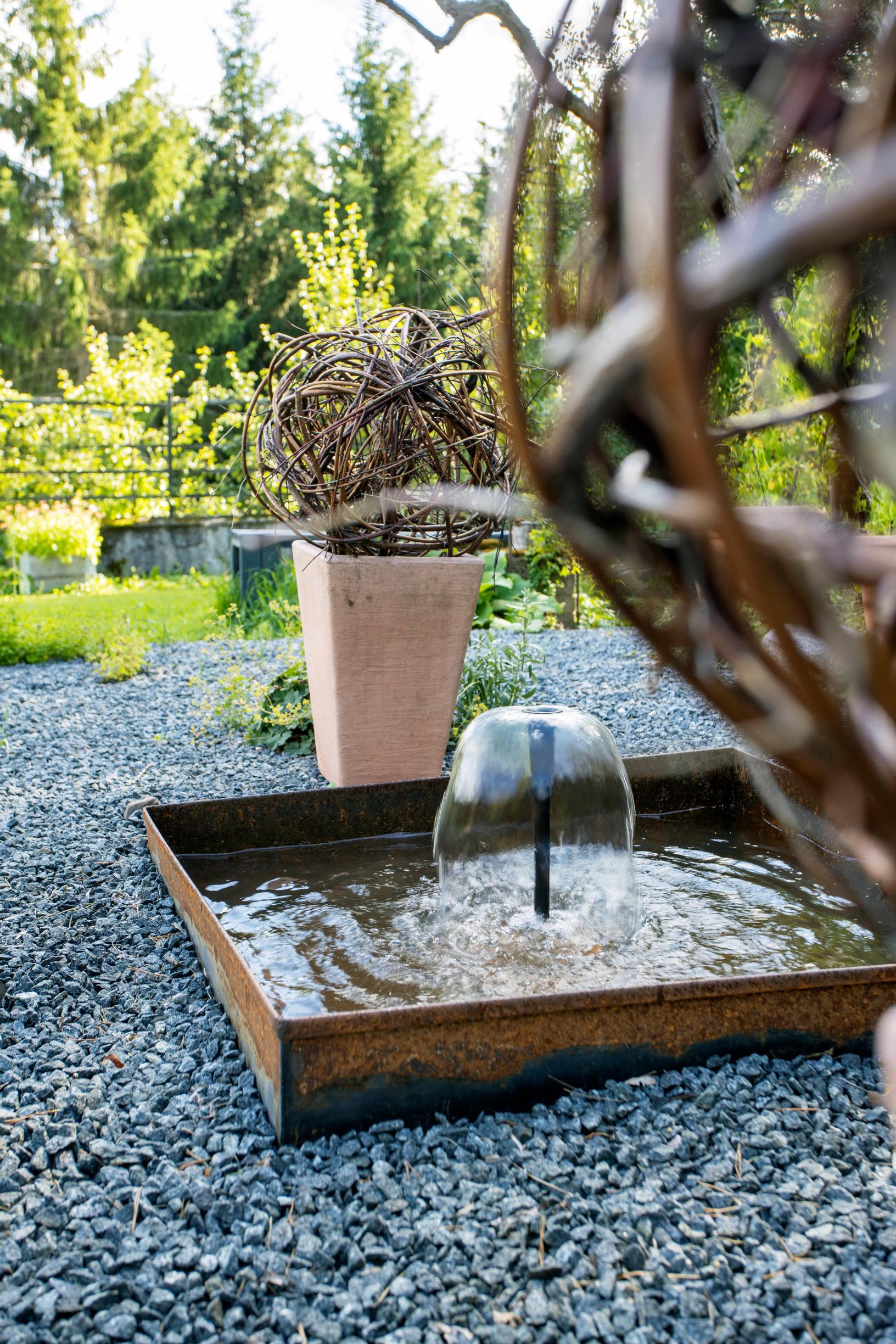
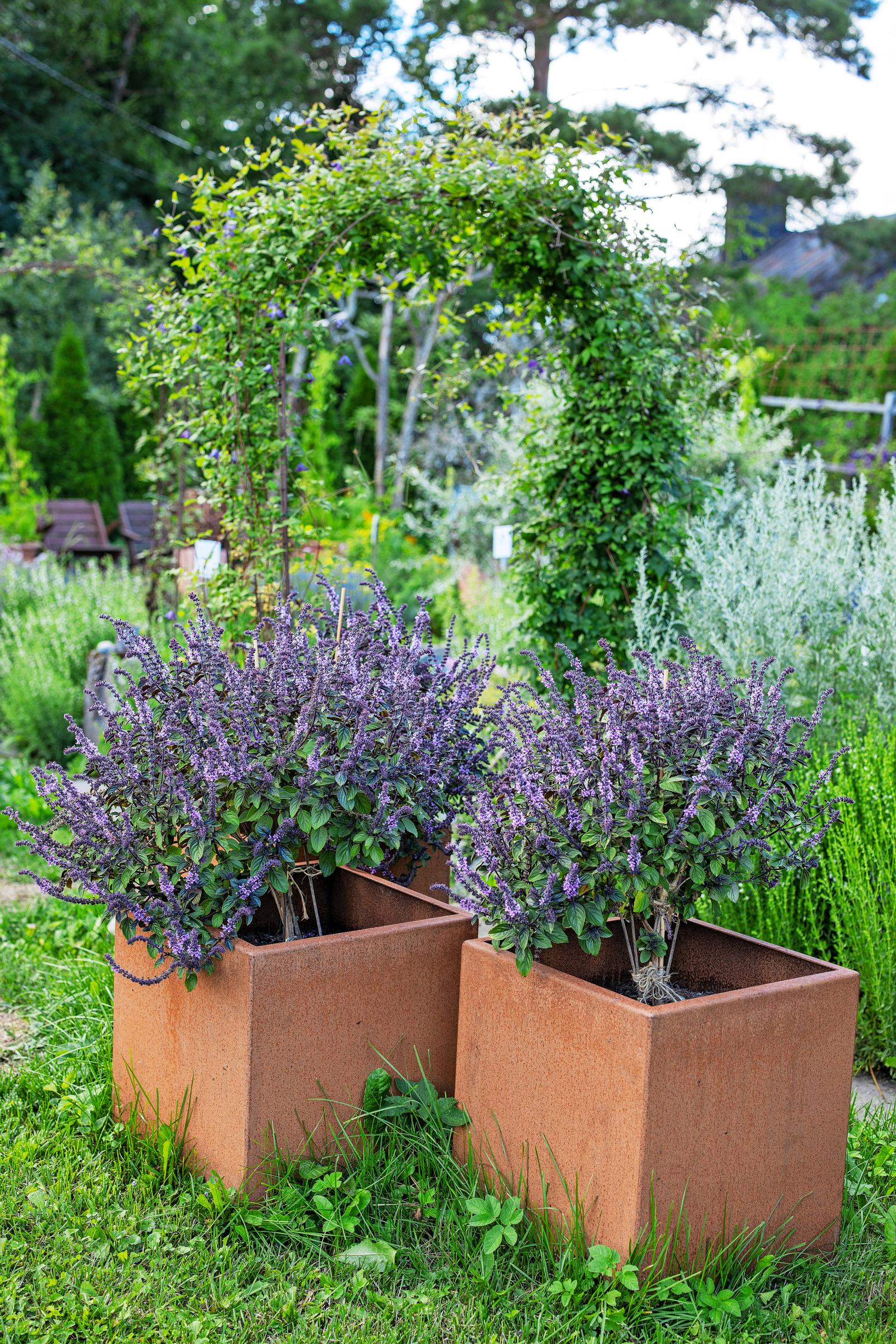
Rebar is Maje’s favorite material. She has used it to build trellises and the hop bower in the herb garden, where the metal rods form an M for her mother, Magdalena. An old crystal chandelier hangs from the bower’s ceiling. Her playful imagination has given other finds around the property new uses, too. For example, she spray-painted a worn-out soccer ball silver, and now it looks like a classic garden globe that has ornamented grand gardens for centuries. When choosing plants, Maje relies on the expertise of local gardeners Annika and Charlotta. If a seedling isn’t thriving, a quick call to one of them often does the trick.
“Another favorite garden shop of mine is the legendary Zetas in Stockholm. It’s a fun coincidence that its owner’s grandfather was from here originally.”
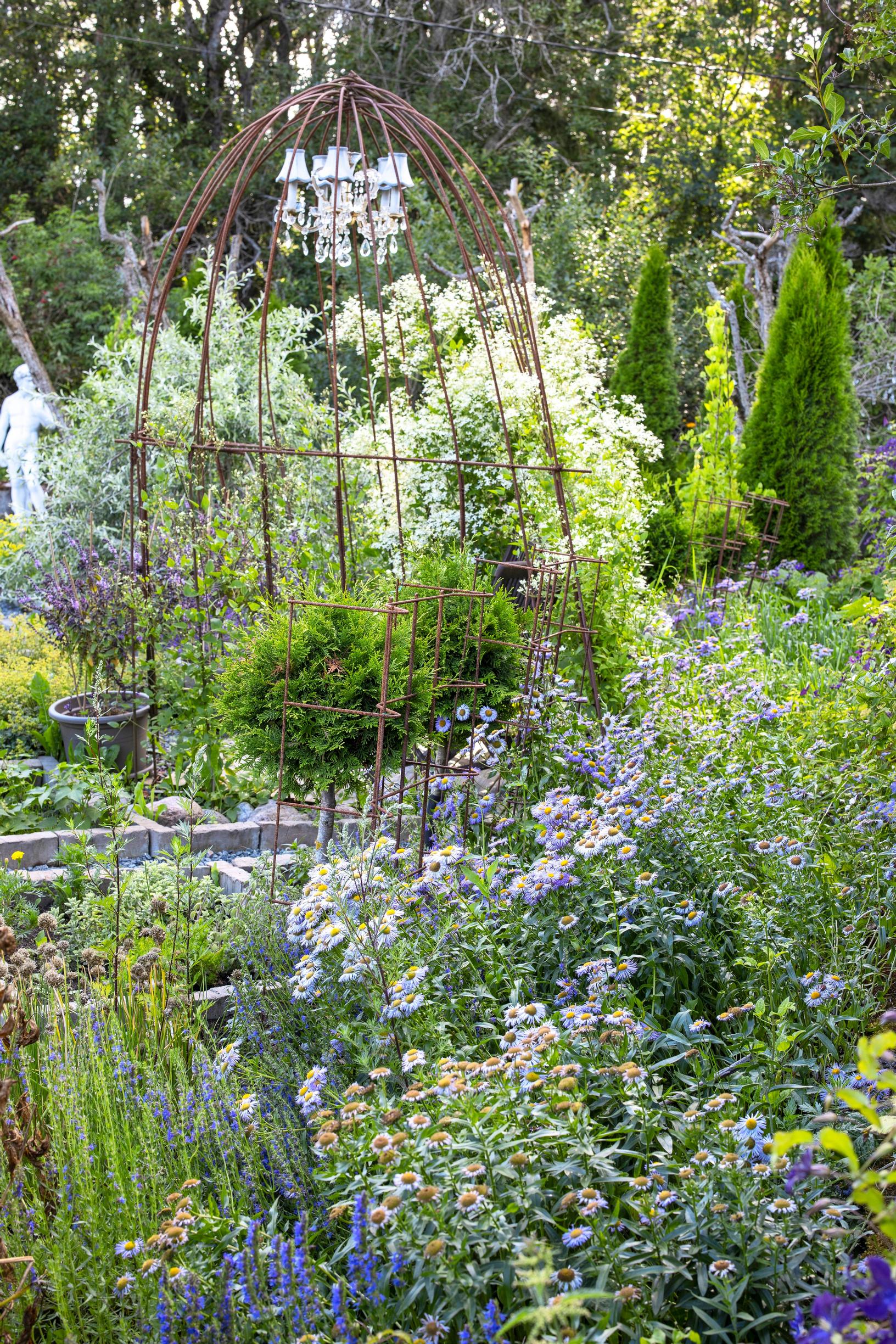
For Maje, her yard is like a playhouse where she makes all the rules.
Although Maje has shaped the garden to her own taste, memories of previous generations are everywhere. Her mother used to plant birches whenever she got tired of part of the garden. Maje pruned their lower branches, creating a garden room with dazzling white trunks in rows. Now this spot even hosts small outdoor concerts in summer. Each January, the pollarded crowns of these little trees form a bright green roof over the music space.
“The piece I made out of concrete chairs in the lilac bower reminds me of the fun summer gatherings my family used to have. For my elderly aunts, someone’s name day was enough reason to bring out a fancy table setting, put on dresses, and enjoy coffee with cream and pastries. I want the garden to stay a joyful place in my time, too.”
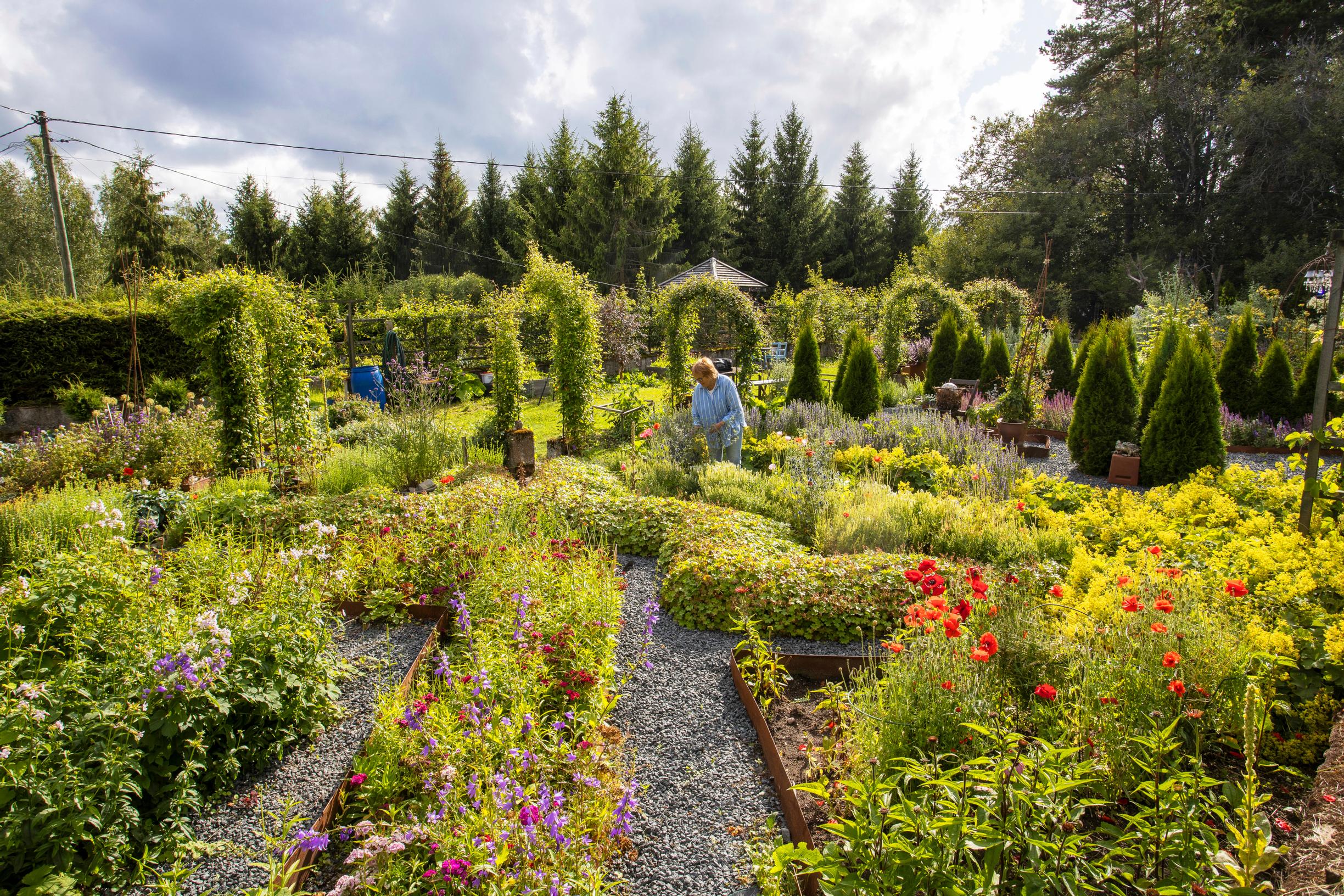
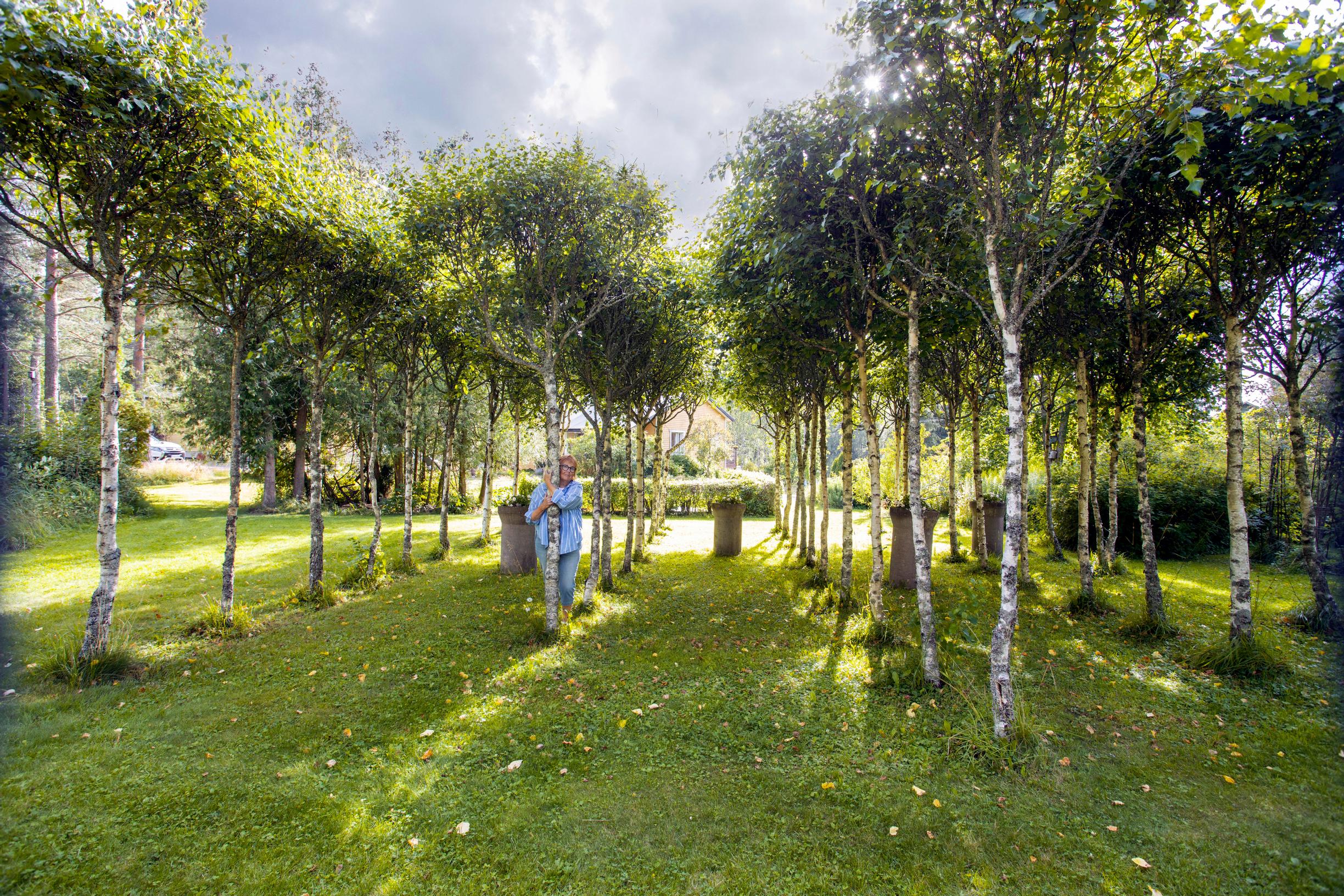
Maje’s tips for a feel-good garden
Prune lower branches
Trees that have their lower branches removed let in more air and bring structure to the garden, while highlighting their striking trunks. Start pruning early in the tree’s life. Consistent trimming will give the best results. Species that bleed sap—like maples, birches, and cherries or plums—are safer to prune in late summer or very early spring, when they’re still dormant.
Make time to relax
Plan garden projects so you can also enjoy the scenery and unwind. A good guideline is to finish the heaviest work by Midsummer. Then you can spend the rest of the season on vacation and light maintenance.
Bend some rebar
A lightweight gazebo built from rebar goes up quickly and fits any garden style. If you want a bit of shade or privacy, plant delicate annual climbers like runner beans or black-eyed Susan at the edges.
